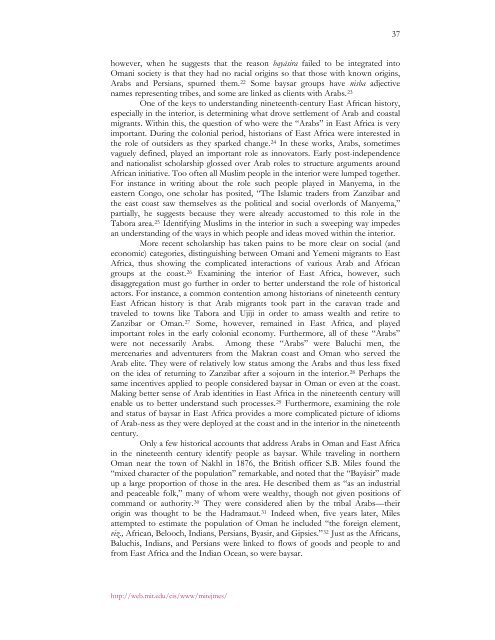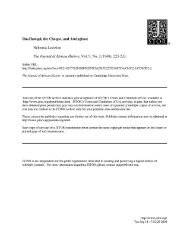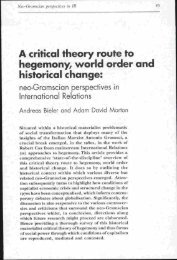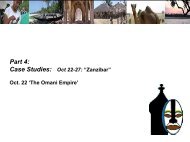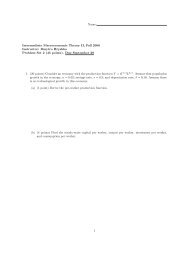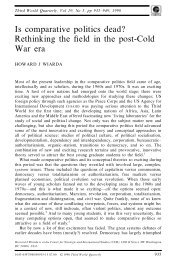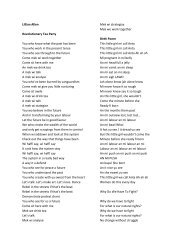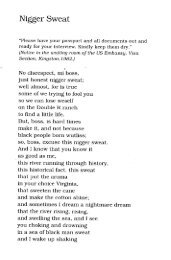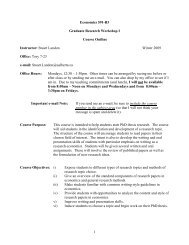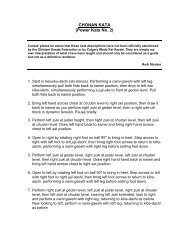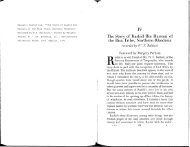personal memories revolutionary states and indian ocean migrations
personal memories revolutionary states and indian ocean migrations
personal memories revolutionary states and indian ocean migrations
You also want an ePaper? Increase the reach of your titles
YUMPU automatically turns print PDFs into web optimized ePapers that Google loves.
however, when he suggests that the reason bayāsira failed to be integrated into<br />
Omani society is that they had no racial origins so that those with known origins,<br />
Arabs <strong>and</strong> Persians, spurned them. 22 Some baysar groups have nisba adjective<br />
names representing tribes, <strong>and</strong> some are linked as clients with Arabs. 23<br />
One of the keys to underst<strong>and</strong>ing nineteenth-century East African history,<br />
especially in the interior, is determining what drove settlement of Arab <strong>and</strong> coastal<br />
migrants. Within this, the question of who were the “Arabs” in East Africa is very<br />
important. During the colonial period, historians of East Africa were interested in<br />
the role of outsiders as they sparked change. 24 In these works, Arabs, sometimes<br />
vaguely defined, played an important role as innovators. Early post-independence<br />
<strong>and</strong> nationalist scholarship glossed over Arab roles to structure arguments around<br />
African initiative. Too often all Muslim people in the interior were lumped together.<br />
For instance in writing about the role such people played in Manyema, in the<br />
eastern Congo, one scholar has posited, “The Islamic traders from Zanzibar <strong>and</strong><br />
the east coast saw themselves as the political <strong>and</strong> social overlords of Manyema,”<br />
partially, he suggests because they were already accustomed to this role in the<br />
Tabora area. 25 Identifying Muslims in the interior in such a sweeping way impedes<br />
an underst<strong>and</strong>ing of the ways in which people <strong>and</strong> ideas moved within the interior.<br />
More recent scholarship has taken pains to be more clear on social (<strong>and</strong><br />
economic) categories, distinguishing between Omani <strong>and</strong> Yemeni migrants to East<br />
Africa, thus showing the complicated interactions of various Arab <strong>and</strong> African<br />
groups at the coast. 26 Examining the interior of East Africa, however, such<br />
disaggregation must go further in order to better underst<strong>and</strong> the role of historical<br />
actors. For instance, a common contention among historians of nineteenth century<br />
East African history is that Arab migrants took part in the caravan trade <strong>and</strong><br />
traveled to towns like Tabora <strong>and</strong> Ujiji in order to amass wealth <strong>and</strong> retire to<br />
Zanzibar or Oman. 27 Some, however, remained in East Africa, <strong>and</strong> played<br />
important roles in the early colonial economy. Furthermore, all of these “Arabs”<br />
were not necessarily Arabs. Among these “Arabs” were Baluchi men, the<br />
mercenaries <strong>and</strong> adventurers from the Makran coast <strong>and</strong> Oman who served the<br />
Arab elite. They were of relatively low status among the Arabs <strong>and</strong> thus less fixed<br />
on the idea of returning to Zanzibar after a sojourn in the interior. 28 Perhaps the<br />
same incentives applied to people considered baysar in Oman or even at the coast.<br />
Making better sense of Arab identities in East Africa in the nineteenth century will<br />
enable us to better underst<strong>and</strong> such processes. 29 Furthermore, examining the role<br />
<strong>and</strong> status of baysar in East Africa provides a more complicated picture of idioms<br />
of Arab-ness as they were deployed at the coast <strong>and</strong> in the interior in the nineteenth<br />
century.<br />
Only a few historical accounts that address Arabs in Oman <strong>and</strong> East Africa<br />
in the nineteenth century identify people as baysar. While traveling in northern<br />
Oman near the town of Nakhl in 1876, the British officer S.B. Miles found the<br />
“mixed character of the population” remarkable, <strong>and</strong> noted that the “Bayâsir” made<br />
up a large proportion of those in the area. He described them as “as an industrial<br />
<strong>and</strong> peaceable folk,” many of whom were wealthy, though not given positions of<br />
comm<strong>and</strong> or authority. 30 They were considered alien by the tribal Arabs—their<br />
origin was thought to be the Hadramaut. 31 Indeed when, five years later, Miles<br />
attempted to estimate the population of Oman he included “the foreign element,<br />
viz., African, Belooch, Indians, Persians, Byasir, <strong>and</strong> Gipsies.” 32 Just as the Africans,<br />
Baluchis, Indians, <strong>and</strong> Persians were linked to flows of goods <strong>and</strong> people to <strong>and</strong><br />
from East Africa <strong>and</strong> the Indian Ocean, so were baysar.<br />
http://web.mit.edu/cis/www/mitejmes/<br />
37


